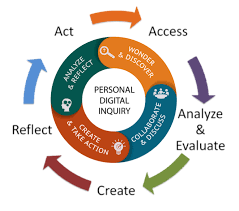Tony Wagner said, “we teach and test things most students have no interest in an will never need” (as cited in Friedman, 2013). This week in CEP 810, I was tasked to create a lesson plan that integrates technology and the science curriculum. Additionally, my lesson plan requires students to follow the engineering design process to inquire, design and create, and evaluate a model to demonstrate forces and projectile motion. The purpose of this lesson is to teach students how to think and become innovators, which are important skills to be successful in our world today (Friedman, 2013).
I developed a lesson for a General Physics class at the secondary level. At this point in the curriculum, students are familiar with projectiles, various forces, and are able to explain how each force acts on an object and the force’s effect on that object. Students will research catapults and learn the science concepts behind their functions, design and create a catapult, and publish their product and reflections on the Internet for others to view and assess. Students experience a new learning culture by acquiring information and learning from the Internet. Douglas Thomas and John Seely Brown (2011, p. 91-99) explain “that to thrive in these learning environments, students must (a) focus more on knowing where to find information than on knowing what, (b) learn to generate content that represents their learning, (c) understand how what they’re making is dependent on the context of creation itself, and (d) learn that play is how people generate new understanding”.

Students also follow the five core competencies outlined by Renee Hobbs, and should be integrated in all subject areas (2011, p. 12). Students access information during the initial stages of my lesson plan to acquire knowledge about catapults and their functions (Hobbs, 2011, p. 13). They organize the information and use problem-solving skills to create a catapult that accurately launches marshmallows into a trash bin set up five meters from the launchpad. Therefore, my lesson gives students the opportunity to be innovators and gain skills that will help them be successful in their personal and professional lives. Tony Wagner explains the importance of students having “the capacity to innovate … and skills like critical thinking, communication and collaboration are far more important than academic knowledge” (as cited in Friedman, 2013).
References
Friedman, T. L. (2013, March 30). Need a Job? Invent It. Retrieved June 12, 2018, from https://www.nytimes.com/2013/03/31/opinion/sunday/friedman-need-a-job-invent-it.html?smid=pl-share
Google LLC. (2018). Personal Digital Inquiry for Digital and Media Literacy [Digital image]. Retrieved June 17, 2018, from https://encrypted-tbn0.gstatic.com/images?q=tbn:ANd9GcRRYULDYlu5U-kSHX8E8SZ7MacbtH1PdUPgWKUikqCsWRlECwCa
Hobbs, R. (2011). Digital and media literacy: Connecting culture and classroom. Thousand Oaks, CA: Corwin Press.
Science Buddies. (2018). The Engineering Design Process. Retrieved June 15, 2018, from https://www.sciencebuddies.org/science-fair-projects/engineering-design-process/engineering-design-process-steps#theengineeringdesignprocess
Thomas, D., & Brown, J. S. (2011). A new culture of learning: Cultivating the imagination for a world of constant change. Lexington, KY: CreateSpace Independent Publishing Platform.
